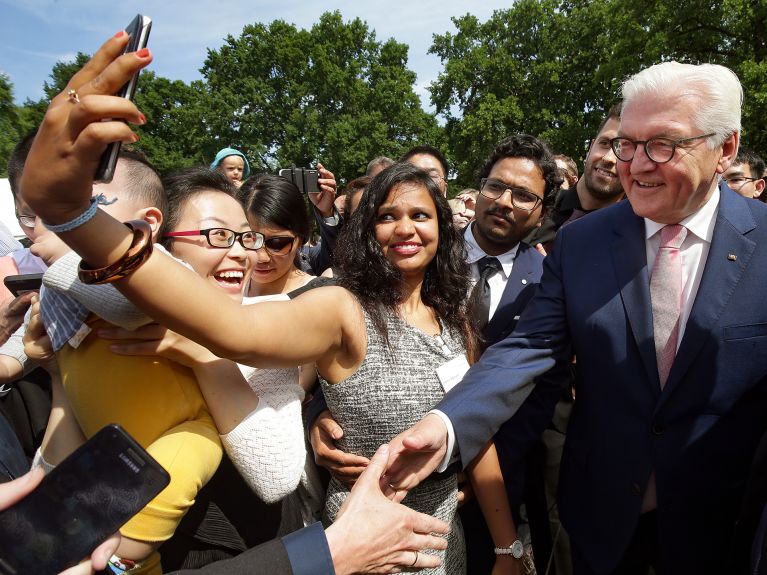Like to become a Humboldtian?
The Alexander von Humboldt Foundation is creating a worldwide network of cutting-edge research. Here's all you need to know about the Foundation.

How long has the Humboldt Foundation existed?
The Foundation was established in 1860, shortly after Alexander von Humboldt's death, to support research expeditions by German explorers and scientists around the world. However, the Foundation lost its capital during the period of hyperinflation after the First World War. It was re-established by the German Foreign Office in 1925 with a different purpose. From then on, the Alexander von Humboldt Foundation no longer financed expeditions, but funded study visits by foreign researchers to Germany. It ceased operations at the end of the Second World War.
What does the Foundation do today?
The Foundation was launched by the Federal Republic of Germany for the third time in 1953. Former scholarship holders in particular from all over the world had campaigned for this step. The objectives are the same as those of the second foundation. Today, the Foundation funds and supports international guest researchers of all disciplines during their research stays in Germany. More than 28,500 scientists from 140 countries have been funded, including, to date, 55 Nobel laureates. One of the Foundation's central goals is worldwide networking between researchers and thus between sciences. The Foundation has its headquarters in Bonn-Bad Godesberg.
Who finances the Foundation?
The Humboldt Foundation is primarily funded by Germany's Federal Government, in particular the Federal Foreign Office, the Federal Ministry of Education and Research, the Federal Ministry for Economic Cooperation and Development, and the Federal Ministry for the Environment, Nature Conservation and Nuclear Safety, plus 5.5 percent from the EU, other foundations and sponsors. In 2017, the Foundation's expenditure totalled to 127.3 million euros.
How does the networking process work?
According to its statutes, the Foundation does not support projects, but people who achieve top scientific results. It explicitly stresses the importance of the "pioneering spirit of individual personalities" for scientific progress. It wants to support these people and has equally set itself the objective of encouraging networking between these people. The Foundation itself calls the people it sponsors Humboldtians, underlining the idea of a worldwide community of fellowship holders and award winners. The Alexander von Humboldt Foundation awards many different prizes; the most substantial one is worth 5 million euros for experimental scientists and 3.5 million euros for theoretical scientists. The money is made available to the prizewinning scientists for their research over a period of five years.
Dieses YouTube-Video kann in einem neuen Tab abgespielt werden
YouTube öffnenThird party content
We use YouTube to embed content that may collect data about your activity. Please review the details and accept the service to see this content.
Open consent formYou would like to receive regular information about Germany? Subscribe here:



